- Administrator
- Albums and Singles
 This is another work that does not have a specific identifiable "theme" regarding its sound (i.e. no focus on guitar, psychedelica, drums, etc), but there is a distinct dark, nihilistic feel to the work as a whole. The overall sound is augmented by the packaging, which depicts Masami Akita in front of a demolished building, all tinted dark and such like. Surprisingly, this darkness manifests itself in the music without pushing it to abnormally harsh or violent realms (by Merzbow standards, of course). Quite the contrary, for a noise work, it is relatively mild and listenable.
This is another work that does not have a specific identifiable "theme" regarding its sound (i.e. no focus on guitar, psychedelica, drums, etc), but there is a distinct dark, nihilistic feel to the work as a whole. The overall sound is augmented by the packaging, which depicts Masami Akita in front of a demolished building, all tinted dark and such like. Surprisingly, this darkness manifests itself in the music without pushing it to abnormally harsh or violent realms (by Merzbow standards, of course). Quite the contrary, for a noise work, it is relatively mild and listenable.
Across five tracks, Akita manages to slip in a surprisingly notable amount of musical elements into the noise mix. "Earth Worms," for one, shows some synth melodies and psychedelic guitar notes bubbling up from the murky noise swamp. "Alishan" also demonstrates an ear for composition, as the track builds from a looped bass melody, layer by layer, into a denser mix of phased analog synth noise chaos.
While there's no explicit sense of percussion in the album, some tracks show a penchant for rhythm in the form of short pulsing synth tones. The swooping synth of "Revenge on Humanity" builds in pace until it takes on the 4/4 kick drum sound of hardcore techno. Mix in the laser gun synth sweeps and you’ve got a piece of chaos that lives up to its name, but never feels out of control or completely random. One recurring element of the album that maybe entirely accidental are that the synth tones (my guess, the classic EMS Synthi 'A') are mostly of a high register chirping variety, which sounds very bird like. Given Akita's well-known love of fine feathered friends, it might just be his way of bringing a brighter element to this otherwise dark, fatalistic outing.
Not all the material feels as planned, and other pieces sound more random, but they make up for compositional shallowness in sheer depth of layering, such as the distant punk band practicing in a garage down Masami's street in "Dark Stars," along with the thumping synth pulses and clatterings of junk in his own backyard. As a whole the disc seems to focus on combining the subtleties of his early 1980’s tape-loop based work with his mid 1990’s focus on analog buzzsawing. It works very well, because it makes for a listening experience as opposed to an endurance test, which many noise albums seem to strive to be.
Coma Berenices doesn't break any new ground in the Merzbow canon, but it does a more restrained version of his harsh noise background very well. It's actually a rather accessible album for the genre, and a stark contrast to the building destroying din of Venerology (which was often a little too much even for the staunchest of noise fans), here is a chance to see what the newer, mellower (slightly) Masami Akita has been up to.
samples:
Read More
- Administrator
- Albums and Singles
 The early pioneers of what has become known as "ambient" return after a decade long silence with a fascinating new work that shows the collective staying true to their roots, but at the same time exploring more grimy, less ethnic textures.
The early pioneers of what has become known as "ambient" return after a decade long silence with a fascinating new work that shows the collective staying true to their roots, but at the same time exploring more grimy, less ethnic textures.
Ambient music has become easy. With sampling, digital delay technology, and a pinch of granular synthesis, any dilettante with some stolen software and a bit of gear can pull out a "soundscape" with little to no effort. While not necessarily "quality" in the classical sense, someone with less experience may not be able to see the difference between the aformentioned bedroom wankery and true artistry. In 1982 when O Yuki Conjugate followed up Brian Eno's pioneering work, the technology wasn't there. Instead, organic instruments and primitive analog synths were the best things going, and even when samplers came out, they cost as much as a car and took up about the same amount of room. It's very respectable that on their first release in about a decade, OYC sticks to their guns and avoids the easy route, creating wonderful ambient in the original, "difficult" way with organic technologies and a true ear for composition.
Interestingly enough, the last vestiges of the 1990s (the period of their last significant activity) can be heard in The Euphoria of Disobedience: the flanged organ shards on "Noiseflaw" and "Tropospheric" are the dying gasps of house techno music, and the guitar elements that appear throughout have tinges of the great Britpop invasion that never was. Of course, the most obvious is the ambient subgenre of isolationism of which they were integral in the development of. However, even compared to those artists of that era, there is a great deal more soul and depth to this album.
The Luddite approach shows up in their use of classic synth and electronic rhythms, obvious in "Estuary" and "Sunlessglare" towards the ending of the album. Even "Out Through The Skin" showcases bits of detuned guitars and pitch shifting that is far from groundbreaking technology, but still fascinating in its simplicity. "Where She Goes At Night" is another one that stands out as completely different, being the only track that actually features some noticeable fragments of human voices above the bassy tones and alien effects. That is the strongest element of The Euphoria of Disobedience: each track feels unique and stands on its own, yet work well within the full album context.
This disc—which marks a return to activity of OYC after a long pause in activity—is coming at a great time. A time where there aren't many active ambient projects in the traditional sense, these masters of their craft have decided to give it another go.
samples:
Read More
- Matthew Amundsen
- Albums and Singles
With 22 tracks ranging in length from nine seconds to over four minutes, it is a pretty wild ride from beginning to end with almost no filler. While the track listing divides the material according to the three different plays, Zufall, Hollywood Elegien, and The Raft, Kubin's style dips into so many different pools that it would be nearly impossible to sort the songs by ear alone. Whimsically unpredictable, Kubin elicits Dadaist scenarios and fantastic dreamscapes using horns, harps, xylophones, and marching band drums. The album's longest track, "Hollywood," is also its most somber and beautiful, using strings and keys to frame a bittersweet scene. My favorite is "Fischrevue," which sounds like a mad carnival fever dream spilling out of a circus tent, punctuated by jazz snippets. The Raft has some eerie sections of ghostly atmospherics but ends the album with "Miraculous Rescue," an optimistic theme song that sounds like it was created on an old toy keyboard.
Music for Theatre and Radio Play is a whirlwind of tongue-in-cheek humor and outlandish adventures. Not only is it fun to listen to on its own, but it also stimulates interest in the plays for which these songs were composed.
Read More
- Administrator
- Albums and Singles
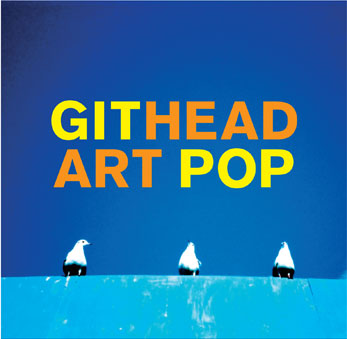 Githead's debut Headgit EP and subsequent full length Profile brought angular post-punk at a time when, quite frankly, everyone else was doing it. That Wire frontman Colin Newman served as its voice and postmodern lyricist did surprisingly little to differentiate it from the fresher crop of youngbloods. Both releases had their respective moments of memorable majesty, such as the subdued tech-house of "To Have And To Hold" and the slogan expropriating screed "Option Paralysis," though neither produced the anticipated excellence of a collaboration between Newman, his wife Malka Spigel, and Robin "Scanner" Rimbaud. With Art Pop, their latest for the Swim ~ imprint, the trio (now a quartet) finally delivers, taking their sound to a level that demands attention from indie rock dweebs and PBR-guzzling hipsters alike.
Githead's debut Headgit EP and subsequent full length Profile brought angular post-punk at a time when, quite frankly, everyone else was doing it. That Wire frontman Colin Newman served as its voice and postmodern lyricist did surprisingly little to differentiate it from the fresher crop of youngbloods. Both releases had their respective moments of memorable majesty, such as the subdued tech-house of "To Have And To Hold" and the slogan expropriating screed "Option Paralysis," though neither produced the anticipated excellence of a collaboration between Newman, his wife Malka Spigel, and Robin "Scanner" Rimbaud. With Art Pop, their latest for the Swim ~ imprint, the trio (now a quartet) finally delivers, taking their sound to a level that demands attention from indie rock dweebs and PBR-guzzling hipsters alike.
From the opening guitar chug of "On Your Own," an immediate wind of change breezes through, and continues to do so as a jangly pop groove with Newman's unique pipes keeps things in perspective. As expected, Newman's lyrics are still as bizarre as ever, with choruses about overloaded email inboxes seeming just a bit too heavy handed, though his rediscovered sense of delivery excuses him of such habitual excesses. As he did so successfully with Wire in the '80s, Newman consummates the sordid wedding of accessible music and theory-laden message, from the complex spittle-flecked diatribe of "Drive By" to "These Days," a deceptively simple lament of numbness.
Spiegel and drummer Max Franken's rhythm section not only keeps everything in order, but also creates elaborate, brilliant grooves that are impossible to ignore. On "Space Life," Spiegel's bass line bursts through the guitar fuzz with a insatiable vitality, while Franken methodically accents every snare. Even the tracks where Newman takes a backseat still shine, though for entirely different reasons. "Lifeloops" detours from the rock n roll for a plucked guitar ballad awash in dreamy synth, with a coolly monotonous Spigel taking on the vocal duties throughout, as does the vocoded "Jet Ear Game," with lyrics cut-up and reassembled from media reviews of Profile.
The material here is anything but homogenous, ranging from the gravely pastoral and somber "Live In Your Head" to the slow and sleazy psych-funk of "Drop," though it all comes together in nearly perfect unison. Of course Wire fanatics and those who have continuously followed Newman’s solo career will enjoy Art Pop, but additionally it has the potential to reach entirely new audiences as previously mentioned. Finally, Githead has made good on its promise with this essential release.
samples:
Read More
- Administrator
- Albums and Singles
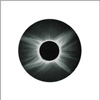 Released in November of 2006 to commemorate their first joint appearance, Z'EV and David Linton each contribute an original track and a remix of the other's work to form this intriguing and unusual album.
Released in November of 2006 to commemorate their first joint appearance, Z'EV and David Linton each contribute an original track and a remix of the other's work to form this intriguing and unusual album.
Z'EV begins briskly with "Soliloquy #1." Unlike some of his other work, drumming isn't necessarily the focus here. On top of a recording of a live performance, Z'EV cuts up a first Gulf War-era sermon delivered by Reverend John MacArthur and rearranges his words in a way that the reverend would surely find sacrilegious. Phrases like "hate God's violent ways" and "God is out of control" illustrate religious hypocrisy in a way that's both funny and true at the same time. Z'EV constructs "Not Nil" using files provided by Linton, and it's a harrowing journey that is quite different from much of Z'EV's other material: stark electronics both airy and tense move into a denser, claustrophobic space, and finally absolve into contemplative overtones accompanied by crackling.
Linton takes the reins from here and continues in this vein with his own live contribution "Emerald Portal Excerpt Part 1." Here, heavy bass grounds floating overtones until a subtle wash of electronics permeates the surrounding space halfway through the track, blissfully submerging the sound as it swells to fill every corner of the room. In contrast, Linton's remix of audio Z'EV provided comes across as a slow but heavy techno anthem. I've never heard Z'EV in this context before, and it is certainly an amusing diversion even if it goes on a little longer than necessary to get its message across.
This album is a thoroughly enjoyable cooperative experiment that shows different sides of both artists, making it the sort of unique document one hopes for when musicians of this caliber work together.
samples:
- Z’EV - Soliloquy #1
- Z’EV - Not Nil
- David Linton - Emerald Portal Excerpt Part One
Read More
- Administrator
- Albums and Singles
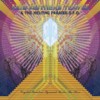 Hot on the heels of The Myth of the Love Electronique comes another album from the ever-prolific Acid Mothers Temple. As consistently rewarding as most of their albums are, this one manages to surpass all but a select few of them. An unusually clear recording by their standards and the introduction of a couple of new elements make it a top-tier addition to this band's fascinating discography.
Hot on the heels of The Myth of the Love Electronique comes another album from the ever-prolific Acid Mothers Temple. As consistently rewarding as most of their albums are, this one manages to surpass all but a select few of them. An unusually clear recording by their standards and the introduction of a couple of new elements make it a top-tier addition to this band's fascinating discography.
Tsuyama Atsushi's firebrand bass leads the band into the fast and furious "Pussy Head Man From Outer Space," erupting with Kawabata Makoto's guitar as a grand slab of high-octane heavy machinery amid electronic gasps of gasoline fumes. One of the benefits of the clearer recording is the opportunity to better witness Atsushi's unbelievably dexterous playing. Makoto's on fire too, sparking some of his most mind-binding passages yet. Kitagawa Hao's vocals are a comfortable presence here that adds a welcome touch of humanity to this frenzied juggernaut.
They scale back the psychosis on "Crystal Pyramid," taking their loping rhythm in a mellower direction. It is a welcome change of pace. The guitar may not be so frantic here, but it is no less intricate. Some vocals with a pitch-changing effect come along for the ride but get left behind when the shimmering interstellar guitars and clouds of electronics go into a hypnotically repetitive state. They blast off in one last fiery crescendo only to leave the earthly plane with an unexpected sudden gasp.
Acid Mothers front-load many of their previous albums with the longest song and leave a couple of come-down tracks in its wake. This time they save their epic for last, the soaring 40-minute "Electric Psilocybin Flashback." Urgent riffs on non-Western scales incite the band into torturing electricity with their screaming guitars. A mystical drone eventually overcomes them, sending them into a meditative passage. Joining them here is an alto saxophone, the first time in my immediate memory that such an instrument has entered an Acid Mothers mix. The horn works great, adding an emotional undercurrent to the passage that wasn't there before. Its appearance is all too brief, and I hope it shows up on subsequent recordings. The song takes a quiet atmospheric turn with an acoustic guitar and gentle singing from Hao before making a playfully Beefheartian return to the main theme. The band cools down for the last ten minutes with some contemplative acoustic playing, drones, and electronic sweeps, ending the album in peaceful fashion.
This is another densely packed album from Acid Mother Temple that nonetheless manages to touch a lot of bases while making the time pass quickly. As both this album and their recent tour proves, they are still every bit at the peak of their powers.
samples:
Read More
- Administrator
- Albums and Singles
 The first new album in several years from this New Zealand trio is a patiently unfurling behemoth that finds them veering between loose rock songs and all-out improvised noise. It is a riveting excursion into shadowy lands of unknown destination, with little to disrupt the veil of gloom.
The first new album in several years from this New Zealand trio is a patiently unfurling behemoth that finds them veering between loose rock songs and all-out improvised noise. It is a riveting excursion into shadowy lands of unknown destination, with little to disrupt the veil of gloom.
The cheekily named "The AMM of Punk Rock" starts with doom-laden, low-end rumbles that cook slowly, roasting over a pit of electronics. A recurring beep brings to mind an emergency vehicle pulling up to the scene of an accident and finding the cars flipped with their wheels still spinning, their engines churning and croaking undulating waves of feedback, and the drivers mysteriously vanished. Following this dark voyage is the album's shortest song and its most structured, "The Magicians." Here, rhythm guitar, vocals, and a steady beat grounds the song while a second guitar clatters and crashes behind them at a distance, if only to shield the others from its blistering, scattered attack until the drums answer in the machine gun finale.
"Macoute" drags bass notes and static across the floor during its frazzled intro before returning with the ruffled noises of strangled machinery: a warped, shifting pulse takes center, eventually giving way to high-pitched wailing and a few evolving textures before ending in decay. This abstraction alternates with "Eternity," whose recurring beat returns the album to solid ground. The guitars accumulate into a mixture of unassuming riffs, feedback, and crackling gestures that compels the song forward until achieving a hazy moment of solidarity with the drums.
The only time on this otherwise excellent album that seems wasted is the beginning of its longest track, "Garage," whose first ten minutes of hissing electronics, random squeals, and tentative guitar noodling makes it sound like the band is being captured during an uninspired practice. However, the second half of the song is fantastic as the drones, strums, and feedback all start to work together and join the drums for one last hypnotic session before the album ends.
An album this consistently enjoyable and unpredictably unsettling is well worth the wait, and the improvisations herein are enough to satisfy strange appetites for a long time to come.
samples:
Read More
- Administrator
- Albums and Singles
 Due to be released on vinyl soon, this is currently only available as a double CD from their recent Australasian tour. Although recorded around the same time as their Boris collaboration, Oracle is pure Sunn O))). There is a move away from the murkiness of Black One but without a total return to their classic sound. Granted there is a lot of droning guitars but there is an equal amount of guitar-free experimentation which is even heavier than I had expected.
Due to be released on vinyl soon, this is currently only available as a double CD from their recent Australasian tour. Although recorded around the same time as their Boris collaboration, Oracle is pure Sunn O))). There is a move away from the murkiness of Black One but without a total return to their classic sound. Granted there is a lot of droning guitars but there is an equal amount of guitar-free experimentation which is even heavier than I had expected.
Southern Lord
The opener, "Belülrol Pusztít," is a different version of the track that Sunn O))) contributed to the Jukebox Buddha compilation. The foundations for the piece are processed Buddha Machines which sound a million miles away from the delicate and relaxing tones of FM3's original gizmos. Here the drones are supplemented with a jackhammer and Attila Csihar sounds as evil as ever; his invocations, throat singing and screeches sounding like a chorus of demons. This is another strong step forward for Sunn O))), I like how their studio work is diverging from the huge riffing of their live performances. It would be easy for them to churn out album after album of slowed down riffs but with last year's Altar album with Boris and the likes of this piece, they continue to surprise me.
On the other hand, the second of the two pieces on Oracle is not as exciting. It is precisely the type of heavy riffing they can produce without much effort. However, "Orakulum" was commissioned by the artist Banks Violette for an installation in London. Violette made replicas of Sunn O)))'s backline out of salt and this music was played. The intention was for the installation to feel like something was missing (i.e the band and the audience) so it is not surprising that the music itself is just a Sunn O))) live standard with added frills. Following "Belülrol Pusztít" this track seems a little pedestrian: variations of these riffs are on most of the many Sunn O))) live albums so it is easy to feel a little burnt out while listening to it. That said, once I listened to "Orakullum" a few times it is revealed to be an impeccable performance by the band. Again Csihar's vocals take it to an altogether more disturbing dimension, his performance is the velvet lining on the Grimm Robes.
This limited edition version of Oracle comes with a one-track bonus CD. "HeliO)))sophist" is a collage of live recordings made in 2005 on the band's European tour. Oren Ambarchi assembled the collage, creating the ultimate Sunn O))) live album. It is hard to hear the joins between the various recordings; it could well be just one performance. The layering of the vocals is the only thing that suggests that this is a reworking of live recordings. The overall effect is impressive but I would not be too upset if I missed out on this bonus disc; it is a nice way to spend 45 minutes but not essential by any means considering the amount of live albums the band have already produced (all of which are no substitute for actually seeing them live).
Oracle is unlikely to win Sunn O))) any new fans, it does not have the same enormity of their previous albums or the accessibility of Altar. However, with the flood of Sunn O))) related bands releasing albums at the moment (KTL, Grave Temple Trio, Burial Temple Trio, Ginnungagap, Aethenor, etc.) it is great to hear the masters doing what they do best. With any luck the next Sunn O))) album will focus on the more experimental side of their sound, as seen here on "Belülrol Pusztít." They have never ignored their experimental leanings in the past but now might be the time to completely embrace them and leave all the tag along doom bands in their dust.
samples:
Read More
- Administrator
- Albums and Singles
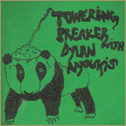 The performances of Dylan Nyoukis (Blood Stereo member and Chocolate Monk label CEO) come across like rinses of an infectious disease. His collaborations end up drenching the other party in a gnarled sheen of vocal mutations like a plague sweat. Fellow Brighton heads Towering Breaker attempt to keep their grip on their own noise/splutter before the maw of Nyoukis gulps them down.
The performances of Dylan Nyoukis (Blood Stereo member and Chocolate Monk label CEO) come across like rinses of an infectious disease. His collaborations end up drenching the other party in a gnarled sheen of vocal mutations like a plague sweat. Fellow Brighton heads Towering Breaker attempt to keep their grip on their own noise/splutter before the maw of Nyoukis gulps them down.
Most of this record is made up of vocal muck smears and layers of slowed down drone like a soundtrack to degenerate hole-riddled sock puppet sex. There are a couple of rhythm loops grounding the freefall, both "MMM1" and "Tapes Tongue" roll and grumble along like ghost trains complete with ghostly wails. The shrieks of Nyoukis' oscillator-ribbed throat are spattered over these tracks, restless bubbles and pops that only a deranged tongue could spout.
Viscous drips of mess collide with overwhelming eyes-rolled-back shrieking fug; this is the sound of three men gorging on pig fat. There are enough other elements involved on Visions Versions to raise this release above the crunching noise deluge. Out of the oil and quivering come loops of Organ drone and liberated harmonica, no throat-based sound appears too out-there for these guys. It's not all straight-face vocal abuse though, "////" explodes like a chimp attack and a loose-nutted motor in a gale while a purloined Kids vocoder on "Murk Visions" heralds the spilling of the belly of the beast through dub vomit.
Ugly records rarely sound like this much fun.
samples:
Read More
- Administrator
- Albums and Singles
 From the basic description, one might be left shaking their heads: organ improviser Nils Henrik Asheim and electronic noise thug Lasse Marhaug got together and improvised some material in an Oslo cathedral. However, as odd as the setting sounds, the result is fascinating.
From the basic description, one might be left shaking their heads: organ improviser Nils Henrik Asheim and electronic noise thug Lasse Marhaug got together and improvised some material in an Oslo cathedral. However, as odd as the setting sounds, the result is fascinating.
Part instrumental and part field recording in feel, the two musicians set up in the organ loft of a soon to be renovated cathedral in Oslo, Norway late one night and improvised for an hour. Rather than using any direct to tape or digital recording methods, the room was instead mic;d (which is discussed in pure audiophile detail within the liner notes) to ensure an optimum meshing of Asheim's pipe organ and Marhaug's electronics. This strategy was extremely effective, as "Phoneuma" seamlessly combines the chime-like electronic tones from Marhaug's laptop with the mid and high end sustained organ that slowly and dramatically builds from a gentle, calm opening to a massive, chaotic roar that concludes in a wall of buzzing and dissonance.
The two not only show their instrumental proficiency, but their ability to improvise and compose in the improvisational context as well. Given the nature of the session, one of limited instrumentation and completed in a very brief window of time, it would be easy to assume that the tracks would blend together in uniformity, but that is far from the case. Each of the five pieces have their own distinct feel and mood, from the aforementioned filmic "Phoneuma" to the mechanical, electronics focused "Philomela," which seems like a boiler on its last legs somewhere deep within the bowels of the church as the center point, the clangs and rattles form the basis of the track before a piercing organ shrieks over the din at the end. Even the less than two minute span of "Magnaton" has its own unique ambience: focused bursts of harsh electronics, organ noise, and stuttering machine tones.
Both the opening and the ending tracks effectively bookend this album, from the massive tonal organ walls and electronic grinds of "Bordunal" which convey a sense of grandeur to the closer "Clavaeolina," where all sustained passages of ringing organ (reminiscent of Hermann Nitsch's Harmoniumwerk releases) eventually mesh into a soft, gentle melody of organ, and later a subtle, quiet electronic ending.
For all its basic structure, Grand Mutation is a complex, powerful work that reveals new textures and facets on each listen. What seems like an odd proposition at first is instead a fascinating meeting that surpasses any expectations that may have been held (though who only knows what the expectations could have been). I only wish they would take this show on the road. I'm sure this would be the best way to get most of us up early and in a church on a Sunday morning.
samples:
Read More
- Administrator
- Albums and Singles
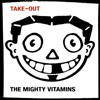 An initial spin of this album will leave a sense of "what the hell did I just listen to?," but a few more rotations and what's revealed is some of the most spastic of free jazz and a set of music just waiting to have a cartoon accompaniment.
An initial spin of this album will leave a sense of "what the hell did I just listen to?," but a few more rotations and what's revealed is some of the most spastic of free jazz and a set of music just waiting to have a cartoon accompaniment.
Remember those really old cartoons from childhood like Tom & Jerry, Bugs Bunny, etc.? Remember how they all had a sort of jazzy backing track that augmented the action oh-so-well? The Mighty Vitamins have updated this for the current millennium, and the resulting freakout is great.
The opener "Get a Good Job" establishes the mood for the next 40 odd minutes: a percussion section that sounds sourced from Fred Sanford's junkyard, guitar string abuse that is surely a crime in most states, and dialogue samples right out of a cartoon. Structurally, it doesn’t make much sense, but this blasting opening is followed up by the much more subtle four track "Kaw River Suite," which is based on much of the same instrumentation, but it sounds like someone slipped some Ritalin or Xanax into the boys' kool-aid as their playing is so much more restrained and calm, doing much more "mood" music than anything else. It's not bad at all, but honestly it detracts from the spazz flow of the disc, which really doesn't need any sort of break
Once "Nakatani" gets started again with its shrill sheet metal scrapings and flaming cat howl horns, you know the freakout has begun yet again, which then fails to let up throughout the remainder of the disc, with even some dirty Detroit funk rearing its Parliament-loving head in the massive "39 Steps" and "April 21."
Take-Out is not an album for everyone. In most ways it is dissonant, atonal, and insanely chaotic. It shines through these adjectives, however, making for a hyperactive romp that a cartoon mouse could napalm a cat to. Someone see if they can reanimate Mel Blanc's corpse so he can check this out!
samples:
Read More

